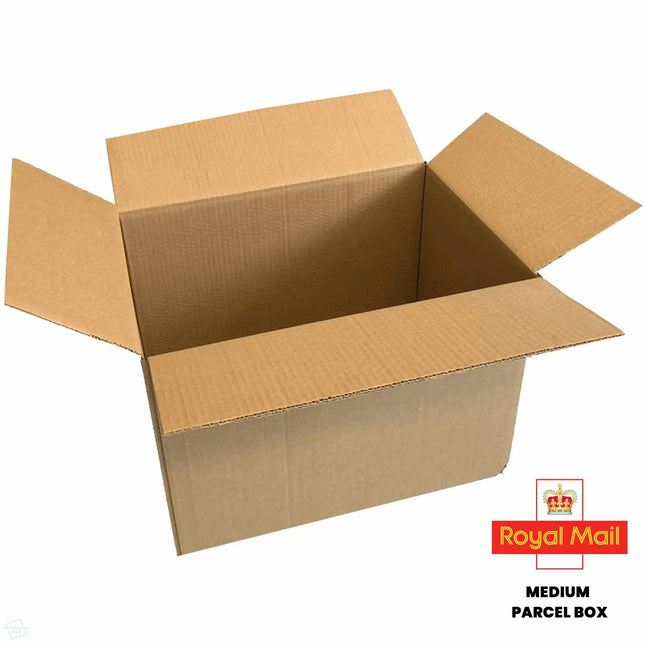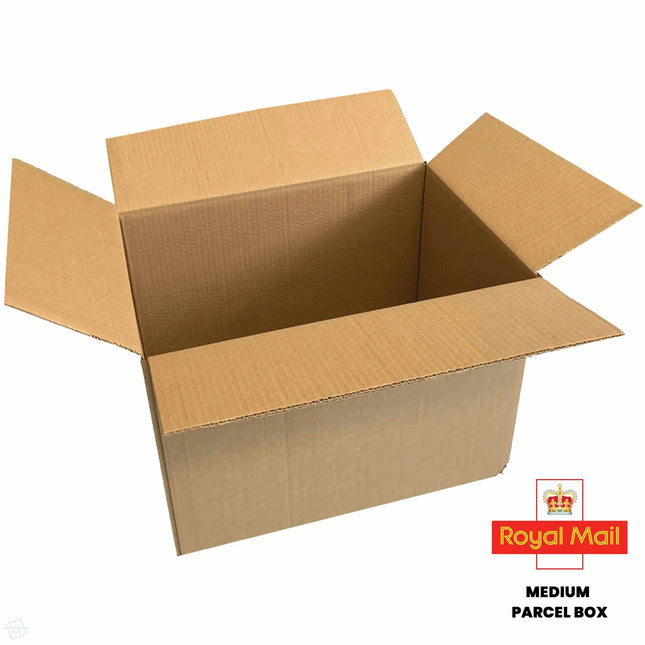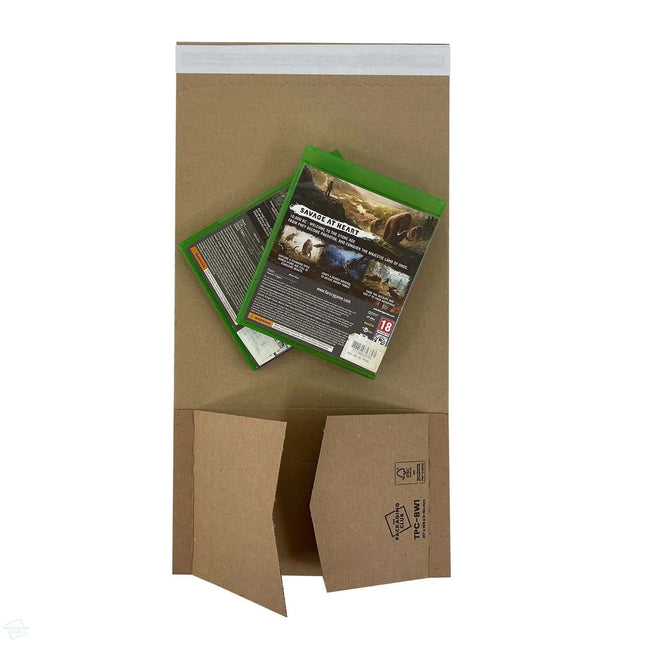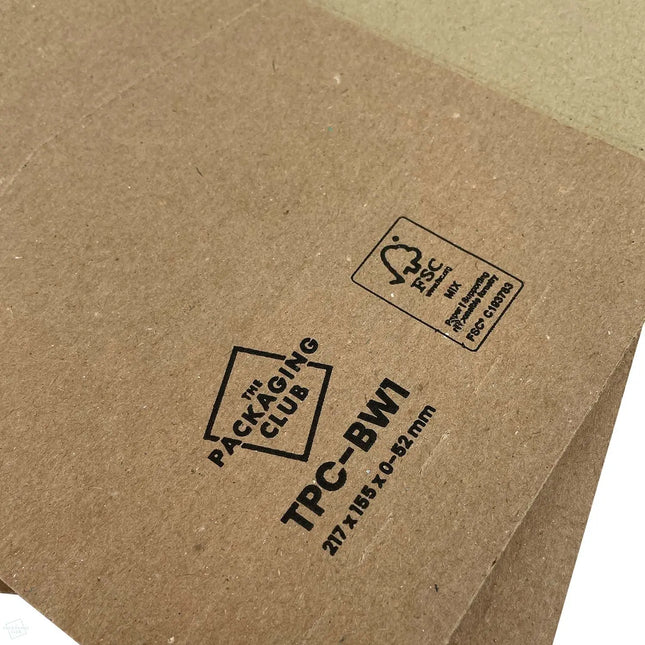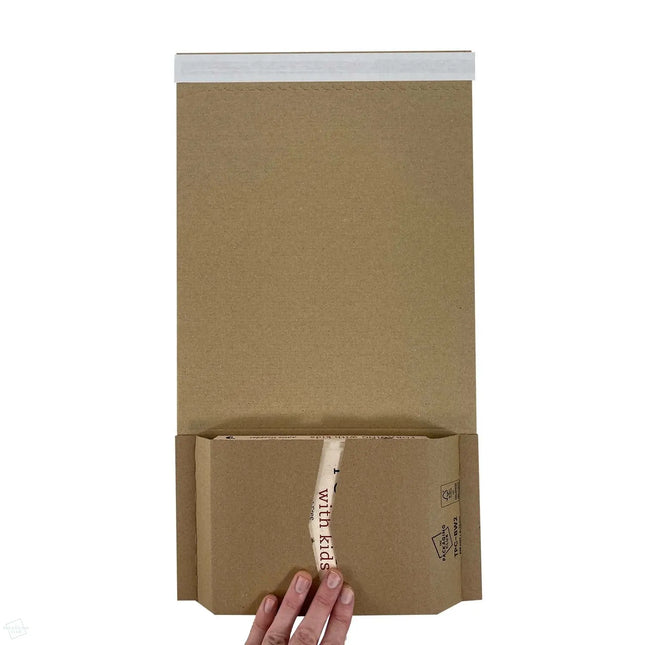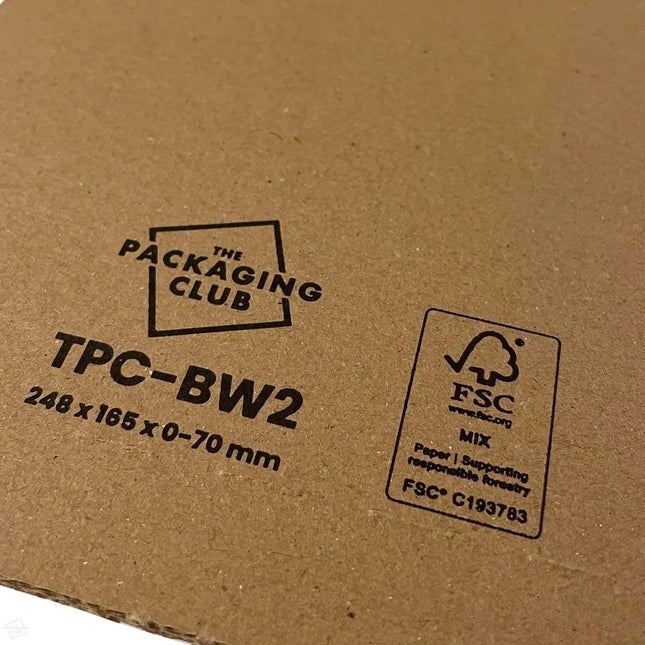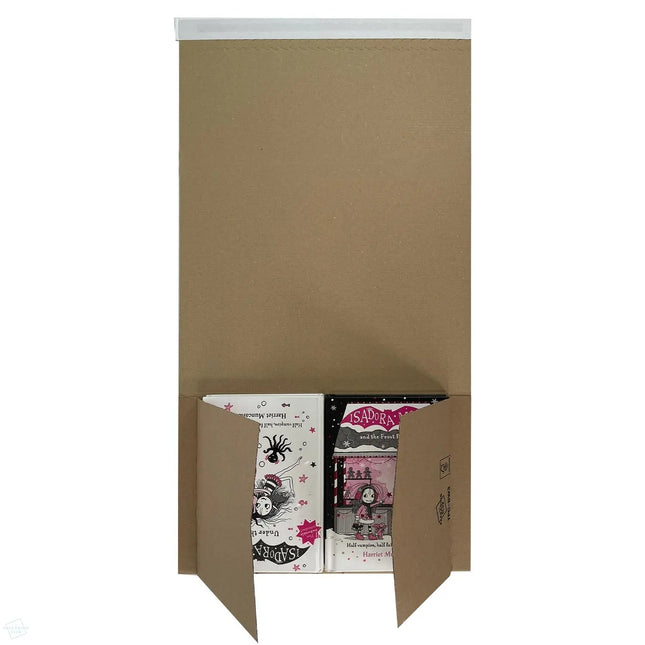How to Save Money on Shipping: Carrier Tariffs, Royal Mail & More

If, when it comes to getting your products out to customers, you’re a fan of Royal Mail , then, as an e-commerce business, you have the ability to plan ahead and save a considerable amount of money by being aware of the tariffs that apply to various sizes and weights of parcels and packages.
As far as other courier companies or shipping services go – DHL, DPD, Evri, for example – it’s more of a question of where a box is going and what it weighs rather than its exact dimensions, but there are other factors to consider too. More on that later.
Whichever courier you end up using - and you might prefer sticking to one or it may suit you better to go with a few - it pays to pack your product in the right-sized box. This is because the Golden Rules of Packaging demand it. Repeat after us: “Packages must be appropriately sized, sustainable and secure.”
Did you know however, that there are also the Golden Rules of Postage? That is, the bigger or heavier the box, the higher the postage costs. Well, yes, you probably did. And obviously, this is generally the rule of thumb whether a package is heading to the neighbouring city or the next continent and with whomever it's being shipped.
Order packaging with care
Prior to placing an order for a significant amount of packaging therefore, you'll want to ensure that the packaging you've chosen is going to get you the most cost-effective postage tariffs available. At the end of the day, for an e-commerce business, postage is pivotal and the cost of getting products to the customer makes a significant indent into your profit margin.
Sticking your product into a box that’s bigger than necessary – and this is especially important if you’re shipping multiple boxes – means that you’ll end up paying a higher rate of postage than necessary. It’s always worth checking whether there are savings to be made by plumping for slightly different packaging. Believe us, a centimetre can make all the difference.
It can be all too easy in the world of cardboard boxes to grab the first option that looks about right and go for a “that’ll do” approach. Or it can be tempting to pick a box that looks fancy and snazzy. Don’t do this. Part of your overall business strategy – as tedious as it may seem - will be to analysis where you can make even the tiniest savings. And if you get your postage right, slim savings on each and every parcel will total a significant amount in the long run. To paraphrase: if you look after the packaging, the pounds will look after themselves.
First off, ask yourself the following questions:
- What size is my product? What is the best-fit packaging option I can use which still ensures its safe and secure delivery?
- Is my product able to be packaged in such a way that it can fit nicely through a letterbox? Letterbox friendly packaging is efficient and convenient for every stakeholder in the delivery process which means it’s considerably cheaper as well. Be aware though that – if you’re using Royal Mail - some letterbox friendly packaging fits easily into the Large Letter tariff, whilst other types would instead fall under the Small Parcel category. And there’s a difference in price.
- Should I consider economies of scale? Does the Royal Mail, for example, offer reduced tariffs depending on the amount of packages? (Spoiler alert - yes it does.)
- Am I delivering nationally or internationally? Might there be alternative couriers out there who could get my packages where they need to go more efficiently, faster, more securely? Is it worth it to me to pay a bit extra for this?
At the Packaging Club we like to be helpful. We enjoy making things as easy as possible for our customers and we’re also fine with admitting that this is because this approach means everyone's a winner.
So here's a basic rundown to help you understand where your parcel might fit in terms of Royal Mail’s specifications. Included in the run down are examples of our packaging products - envelopes, wraps, mailers, boxes etc. - which fulfil the criteria for each category. For associated costs and PDFs of Royal Mail’s most up to date tariffs, click here.
Royal Mail sizes and weights
Royal Mail Letter
L 24cm, W 16.5cm, D 5mm, Weight 100g
This needs no explanation. It’s the basic contents of an envelope: a letter (not that long), birthday card, cheque that’s in the post or ransom demand (you might need to make one considering the rate at which the price of a first-class stamp is going up).
Royal Mail Large Letter
L 35.3cm, W 25cm, D 2.5 cm, Weight 750g
This time, the letter’s a bit bigger (e.g., A4) or a bit heavier… but not that heavy. This will be one of the most useful categories for many e-commerce businesses. Think stickers, flat cake toppers, leaflets, invites, documents, small electronics, games, CDs, DVDs, magazines, some books, etc. The envelopes can be various sizes as long as they fit within the measurements above.
Check out the wide variety of The Packaging Club’s products here that are all perfect for the Large Letter range. These include cardboard envelopes, padded envelopes, corrugated capacity envelopes and book wrap mailers.
Royal Mail Small Parcel
L 45cm, W 35cm, D 16cm, Weight 2kg
The kind of products that would be sent in a ‘small parcel’ according to Royal Mail are a pair of shoes, portable speakers, mobile phones and also heavier items of clothing, like jeans for example. There are a lot more that we can think of which are relatively lightweight but too shapely to qualify as a large letter. Many toiletries, for example, perfumes, beauty products, candles, coffee pods, drinks’ subscriptions, fashion items to name but a few.
Medium and Large Parcels
Royal Mail Medium Parcel: L 61cm, W 46cm, D 46cm, weight 20kg
Royal Mail Large Parcel: 1.5m, 3m L and D combined, weight 30kg
We’re moving into heavier, bulkier territory here. Royal Mail themselves use Parcelforce Worldwide to deliver their larger parcels. This is where you might start to compare the services of other courier companies. Medium and larger packages as well as multiple deliveries are also their area of expertise.
Royal Mail Small Business Provision
If you’re a newly established e-commerce business or a kitchen table operation, it’s well worth considering that the Royal Mail makes provision for small businesses. Offering flexible and tailored services depending on the number of parcels being sent per week, this option is appealing if you’re a fledging e-commerce operation or a smaller outfit steadily building your customer base and reputation. There are additional benefits too, like end-to-end tracking (within the UK), the option to print labels at home and collection services. It beats standing in the queue at the Post Office.
Independent courier or Royal Mail?
It's true that Royal Mail offers a pretty comprehensive service and for many businesses, the Royal Mail continues to be one of the most cost-effective and practical options for many businesses out there. But what are the key differences between them and the couriers? Here are a few:
- Royal Mail operates on behalf of the UK government. Couriers, on the other hand, are independent, privately owned businesses.
- Courier services offer door-to-door service and have their own often incredibly well-established inter and intra-continental distribution networks.
- For the last leg of the order fulfilment process, Royal Mail relies on the service providers operating in the destination country, but they do have international arrangements in place to do so. Although this shouldn't be an issue for countries with established mail systems, this could be problematic in others with less developed postal services.
- Courier services don’t restrict themselves to Post Office opening hours.
- Courier services can be more convenient and efficient and are able to offer cast-iron guarantees. Be warned, this may come at a cost
- Couriers are able to track their parcels far more easily internationally covering the peace of mind angle. Plus, if something untoward does happen to a package, you only have to deal with that one courier company.
Who are the independent couriers?
There are lots, so we’ll stick with the big guns and those who are UK based or who have an established presence in the UK. The websites of all these couriers have simple on-line forms where - by inputting just a few details - you can receive a quote estimating how much it’s going to cost you to send your parcel wherever you need it to go.
If it seems a bit overwhelming to visit every website individually in order to compare like for like, there are sites you can use like www.parcelcompare.com, www.parcelmonkey.co.uk and www.Parcel2Go.com, for example, which will do the comparing for you.
Evri
Formerly known as the delivery company Hermès, Evri claims to be the UK’s “biggest dedicated parcel delivery company” and bills themselves as a “great value parcel delivery and courier service.” The maximum weight they’ll deliver is 15kg, but they also offer a business account option where it’s easy to arrange for both one-off or regular multiple parcel deliveries.
DHL
Delivering over 1.8 billion parcels per year, DHL was founded by three Americans (Dalsey, Hillblom and Lynn – see what they did there?) and is now based in Germany but with branches internationally. The company has over 3,500 drop off points in the UK and offers it’s well-known for its services as a logistics provider.
DPD
A UK based company promising “express delivery services that exceed customers’ wishes” with an emphasis on sustainability, DPD also offers a ‘super urgent’ delivery option as well as fulfilment services (warehouse and distribution). They pride themselves on being innovative.
Parcelforce
Parcelforce was created by the Royal Mail in 1986 becoming the arm of the Post Office responsible for the delivery of larger parcels. In 1990, it became Parcelforce proper and then in 1998, Parcelforce Worldwide. Today, Parcelforce operates a “hub and spoke collection and delivery system with 54 depots across the UK” and still works closely with the Royal Mail.
When it comes to saving money on shipping, one thing is clear: unfortunately, there is no single answer, nor is there a one size that fits all. There are simply too many variables to take into consideration. Fortunately though, the Royal Mail still delivers an excellent service as do the courier companies we've mentioned, so there's no lack of excellent options and the fact that there are options means competitive, affordable prices.
We hope this article has helped you think differently about how the right packaging can reduce your shipping costs. If you're unsure whether your current packaging is truly fit for purpose, our bespoke service is here to help. From optimised sizing to custom structural designs, we can tailor your packaging to ship smarter and spend less. If you have any questions or want to talk through a project, just get in touch. We’d love to hear from you.

